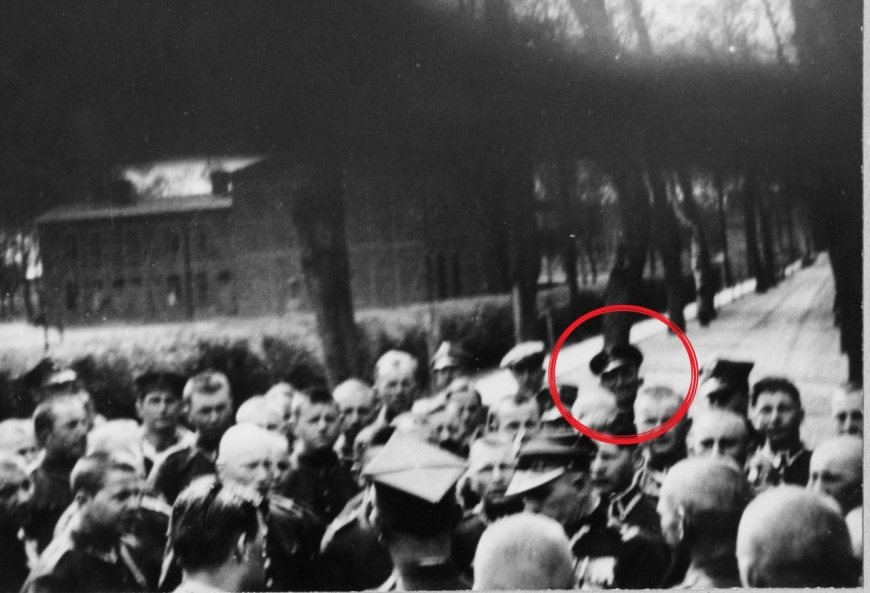#WESTERPLATTEHISTORY - SENIOR SERGEANT RESERVE WOJCIECH NAJSAREK – STATION MASTER AND RAILWAYMAN
Senior Sergeant Reserve Wojciech Najsarek – station master and railwayman. The first of the fallen Polish defenders of the Military Transit Depot at Westerplatte.
As part of a series of several articles, we will introduce you to the profiles and circumstances of the first Polish fallen defenders of the Miltary Depot. In light of the latest discoveries made during exhumation work conducted by the Museum of the Second World War in Gdańsk at the Cemetery of the Fallen Defenders of Westerplatte, we would like to focus on the heroes recognized as killed on September 1st, 1939, on the grounds of Westerplatte. It is important to emphasize that, according to the current state of knowledge, these are some of the first Poles who died as a result of hostilities immediately after the German aggression began. We invite you to familiarize yourself with the details provided in the article.
The attack on Westerplatte began with the massive bombardment of the Polish outpost at Westerplatte by the ship Schleswig-Holstein, which lasted from 4:48 AM to around 4:55 AM. Right after the bombardment ceased, German units, including a storm company of the navy, launched their attack. It can be assumed that the railwayman, Senior Sergeant Reserve Wojciech Najsarek, who was inside the station building at Westerplatte, weathered the storm within its walls. Only after the shelling stopped and simultaneously with the entry of the first German soldiers into the Miltary Depot area did he attempt to escape. It was at this moment that a fatal shot was fired, bringing down the station master as he tried to save his life and make his way to the Polish positions.
As knowledge about Westerplatte was solidified through various publications and radio broadcasts in the early years after the end of World War II, the claim that Najsarek was the first fatality on Westerplatte was repeated. Sometimes, it was even suggested that he might have been the first casualty of World War II. This helped create one of the legends of Westerplatte in the minds of the Polish people. Importantly, the exact burial place of Najsarek is currently unknown. Most likely, he was buried at the cemetery in Zaspa. It's possible that he was laid to rest in one of the graves described as an unknown Polish soldier. Confirmation of this theory comes from the discovery, during exhumations in 1970, of a Polish railwayman's button taken from a mass grave where Polish casualties from the first days of September 1939 in Gdańsk were buried. It is also possible that there are other potential locations where the body of the Polish station master was interred. In the place where he spent his final moments on Westerplatte, thanks to the efforts of PTTK guides, a memorial stone was placed in the 1970s, symbolically marking the end of Najsarek's life. We may never know exactly how he met his demise, but it is worth presenting his biography, which demonstrates his patriotism and dedication to rebuilding Poland.
Senior Sergeant Reserve Wojciech Najsarek was born on April 22nd, 1900, in Jaćmierz (now part of the Zarszyn municipality, Sanok County, Podkarpackie Voivodeship). He was the son of Józef and Ludwika (née Florczak). In 1913, he completed his elementary school education in his hometown. On November 3rd, 1918, he voluntarily joined the 3rd Battalion of Sanok Riflemen. He took part in positional battles near Chyrów. In May 1919, he was transferred to the 18th Infantry Regiment, which included his parent battalion. He fought in the so-called May Offensive near Sambor, Stryi, and Halych, where, along with his unit, he protected, among other things, the railway line and armored trains operating on the route to Lviv. In July 1919, as an ill soldier, he was sent to a field hospital. On August 10th, 1919, he was transferred to the 4th Guard Battalion in Sącz. In May 1920, he fought alongside his battalion near Mołodeczno and Bracław. In July, he was assigned to the Mołodeczno railway station headquarters, and later, after the summer offensive, to the Brześć railway station headquarters. He remained there until the end of the military operations on the front. In 1923, after completing supplementary education at a junior high school in Brześć nad Bugiem, he attended a one-year course for railway assistants in Poznań. In September 1924, he was assigned to the Staff of the Command of Corps District No. IX (Brzesko district), where he served as the registrar of the staff office until the early 1930s. During this time, he married Maria née Ostrowska in 1926. According to surviving documents, in 1933, he was already working as a PKP (Polish State Railways) traffic supervisor at the Reda railway station near Gdynia. On April 19th, 1937, he took over as the station master of the PKP Gdańsk-Westerplatte commercial station. He was actively involved in the social life of Polish organizations in Gdańsk, including the Polish Community, the Association of Poles in the Free City of Gdańsk, Military Railway Training, the Railway Family, the Railway Sports Club, the Marine and Colonial League, and the Air Defense League. He was registered in Nowy Port, where he lived with his family. In August 1939, according to the surviving accounts, although nominally a senior sergeant reserve, he was to be mobilized. The outbreak of the war on September 1st, 1939, found him in the station building, where he had an improvised room. According to one account, he ran out of the building when the German units were advancing. According to another account, recorded by Georg Wolf's sailor of the storm company (documented by Jacek Żebrowski in the 1970s), the Polish railwayman was hit by a burst of machine-gun fire but did not die. Importantly, the severely wounded Najsarek was transported to a medical point and from there to one of the hospitals in Gdańsk. Regardless of sometimes conflicting versions regarding the time and place of the station master's death, he was probably the first Polish defender wounded by the attacking German forces on the Miltary Depot’s grounds. In 1945, he was posthumously awarded the Cross of the Virtuti Militari 5th Class, which was bestowed upon him by a personal order of the Supreme Commander of the Polish Army, dated August 30th, 1945, for his defense of Westerplatte. During his lifetime, he received other awards, including the Medal for the War of 1918–1921, the Medal for the Decade of Regained Independence (1928), and the Bronze Cross of Merit (1930). The citation for the Bronze Cross of Merit perfectly illustrates the special qualities of the Polish defender of Westerplatte:
During his work in the Staff, Senior Sergeant Najsarek proved to be an NCO with outstanding personal qualities and high moral worth. As an executive, he is one of the most outstanding workers, distinguished from others by his diligence, conscientiousness, and meticulousness. Thanks to these qualities, he fulfills his duties as a registrar to the complete satisfaction of all, often working beyond office hours.
He fully deserves recognition.
Commander of Corps District No. IX
(-) TROJANOWSKI Brig. Gen.
Seal and signature of the applicant


















